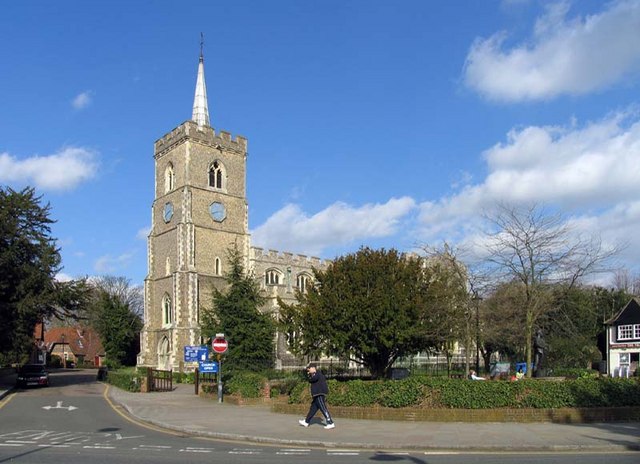|
Zelah, Judea
Zelah or Zela was an unidentified place in the territory of the Tribe of Benjamin, ancient Judea, known as the burial place of King Saul, his father Kish and his son Jonathan, with the 7 grandsons of Saul hung by the Gibeonites. Saul and Jonathan died during the Battle of Gilboa, and 2 Samuel 21:13 refers to King David authorising their bones to be moved to Kish's grave to join the bodies of the 7 grandsons killed in retribution for Saul's slaughter of Gibeonites. It may be the Zilu of the Amarna letters The Amarna letters (; sometimes referred to as the Amarna correspondence or Amarna tablets, and cited with the abbreviation EA, for "El Amarna") are an archive, written on clay tablets, primarily consisting of diplomatic correspondence between t .... References * (Entered under Zelach: quoting Joshua 18:21 and 2 Samuel 21:14) Ancient Israel and Judah Former populated places in Southwest Asia Tribe of Benjamin {{Jewish-hist-stub ... [...More Info...] [...Related Items...] OR: [Wikipedia] [Google] [Baidu] |
Jonathan (1 Samuel)
Jonathan (Hebrew: ''Yəhōnāṯān'' or ''Yōnāṯān''; "Yahweh has gifted") is a heroic figure in 1 Samuel in the Hebrew Bible. A prince of the United Kingdom of Israel, he was the eldest son of King Saul as well as a close friend of David, who eventually succeeded Saul as king. Like his father, he was a man of great strength and swiftness2 Samuel 1:23, and he excelled in archery (2 Samuel 1:22 and slinging. Conflicts with Saul Jonathan first appears in the biblical narrative as the victor of Geba, a Philistine stronghold (1 Samuel 13), while in the following chapter he carries out a lone and secret attack on another Philistine garrison, demonstrating his "prowess and courage as a warrior."T. H. Jones, "Jonathan," in J. D. Douglas, (ed.), ''New Bible Dictionary'' (Grand Rapids: Eerdmans, 1965), 654. However, he eats honey without knowing that his father had said, "Cursed be any man who eats food before evening comes" (1 Samuel 14:24). When he learns of his father's ... [...More Info...] [...Related Items...] OR: [Wikipedia] [Google] [Baidu] |
Tribe Of Benjamin
According to the Torah, the Tribe of Benjamin () was one of the Twelve Tribes of Israel. The tribe was descended from Benjamin, the youngest son of the patriarch Jacob (later given the name Israel) and his wife Rachel. In the Samaritan Pentateuch the name appears as ''Binyamīm'' (). The Tribe of Benjamin, located to the north of Judah but to the south of the Kingdom of Israel, is significant in biblical narratives as a source of various Israelite leaders, including the first Israelite king, Saul, as well as earlier tribal leaders in the period of the Judges. In the period of the judges, they feature in an episode in which a civil war results in their near-extinction as a tribe. After the brief period of the united kingdom of Israel, Benjamin became part of the southern Kingdom of Judah following the split into two kingdoms. After the destruction of the northern kingdom, Benjamin was fully absorbed into the southern kingdom. After the destruction of Judah by the Babylonians in ... [...More Info...] [...Related Items...] OR: [Wikipedia] [Google] [Baidu] |
Saul
Saul (; he, , ; , ; ) was, according to the Hebrew Bible, the first monarch of the United Kingdom of Israel. His reign, traditionally placed in the late 11th century BCE, supposedly marked the transition of Israel and Judah from a scattered tribal society to organized statehood. The historicity of Saul and the United Kingdom of Israel is not universally accepted, as what is known of both comes from the Hebrew Bible. According to the text, he was anointed as king of the Israelites by Samuel, and reigned from Gibeah. Saul is said to have died by suicide when he "fell on his sword" during a battle with the Philistines at Mount Gilboa, in which three of his sons were also killed. The succession to his throne was contested between Ish-bosheth, his only surviving son, and David, his son-in-law; David ultimately prevailed and assumed kingship over Israel and Judah. Biblical account The biblical accounts of Saul's life are found in the Books of Samuel: House of King Saul According t ... [...More Info...] [...Related Items...] OR: [Wikipedia] [Google] [Baidu] |
Kish (Bible)
Kish (Hebrew: קיש ''Qīš'') was the father of the first king of the Israelites, Saul. () Life Kish was a Benjamite of the family of the Matrites (; ; ; ), and there is some question over whether he was the brother or son of Ner ( and ; ). The question may be resolved by reading both Ner and Kish as sons of Abiel. According to the narrative of the appointment of Saul as king in 1 Samuel 9, Kish was the son of Abiel, son of Zeror, the son of Bechorath, the son of Aphiah and he kept donkeys. It was the loss of these donkeys which led Saul and a servant to journey in search of them and so to meet Samuel, Saul's anointer. "The possession of a drove of asses, and several servants, indicates that Kish was a man of some substance". The narrative later confirms that Kish was more concerned about the apparent disappearance of his son than about his loss of possessions. Residence It appears that Kish resided at Gibeah. His tomb is said to be in Zela, in the region of Benjamin in mod ... [...More Info...] [...Related Items...] OR: [Wikipedia] [Google] [Baidu] |
Amarna Letters
The Amarna letters (; sometimes referred to as the Amarna correspondence or Amarna tablets, and cited with the abbreviation EA, for "El Amarna") are an archive, written on clay tablets, primarily consisting of diplomatic correspondence between the Ancient Egypt, Egyptian administration and its representatives in Canaan and Amurru kingdom, Amurru, or neighboring kingdom leaders, during the New Kingdom, spanning a period of no more than thirty years between c. 1360–1332 BC (see Amarna letters#Chronology, here for dates).Moran, p.xxxiv The letters were found in Upper Egypt at el-Amarna, the modern name for the ancient Egyptian capital of ''Akhetaten'', founded by pharaoh Akhenaten (1350s–1330s BC) during the Eighteenth Dynasty of Egypt. The Amarna letters are unusual in Egyptological research, because they are written not in the language of ancient Egypt, but in cuneiform, the writing system of ancient Mesopotamia. Most are in a variety of Akkadian language, Akkadian sometim ... [...More Info...] [...Related Items...] OR: [Wikipedia] [Google] [Baidu] |
Ware, Hertfordshire
Ware is a town in Hertfordshire, England close to the county town of Hertford. It is also a civil parishes in England, civil parish in East Hertfordshire district. Location The town lies on the north–south A10 road (Great Britain), A10 road which is partly shared with the east–west A414 road, A414 (for Hertford to the west and Harlow to the east). There is a large Kingsmead Viaduct, viaduct over the River Lee (England), River Lea at Kings Meads. The £3.6m two-mile bypass opened on 17 January 1979. At the north end of the bypass is the Wodson Park Sports and Leisure Centre and Hanbury Manor, a hotel and country club. The former route of the A10 through the town is now the A1170. The Ware railway station, railway station is on the Hertford East Branch Line and operated by Greater Anglia (train operating company), Greater Anglia and is on a short single track section of the otherwise double track line. History Archaeology has shown that Ware has been occupied since at least t ... [...More Info...] [...Related Items...] OR: [Wikipedia] [Google] [Baidu] |
Wordsworth Editions
Wordsworth Editions is a British publisher known for their low-cost editions of classic literature and non-fiction works. The firm was founded by Michael Trayler in 1987. The firm began to sell paperbacks at £1 in 1992. The firm has approximately 500 titles in print. The firm is family-owned and based in Ware, Hertfordshire Ware is a town in Hertfordshire, England close to the county town of Hertford. It is also a civil parishes in England, civil parish in East Hertfordshire district. Location The town lies on the north–south A10 road (Great Britain), A10 road ..., England. References External links Official website. Publishing companies established in 1987 1987 establishments in England Publishing companies of the United Kingdom Companies based in East Hertfordshire District {{UK-publish-company-stub ... [...More Info...] [...Related Items...] OR: [Wikipedia] [Google] [Baidu] |
Ancient Israel And Judah
The history of ancient Israel and Judah begins in the Southern Levant during the Late Bronze Age and Early Iron Age. "Israel" as a people or tribal confederation (see Israelites) appears for the first time in the Merneptah Stele, an inscription from ancient Egypt that dates to about 1208 BCE. According to modern archaeology, ancient Israelite culture developed as an outgrowth from the Canaanites. Two related Israelite polities known as the Kingdom of Israel and the Kingdom of Judah had emerged in the region by Iron Age II. According to the Hebrew Bible, a "United Monarchy" (consisting of Israel and Judah) existed as early as the 11th century BCE, under the reigns of Saul, David, and Solomon; the country later would have split into two separate kingdoms: Israel (containing the cities of Shechem and Samaria) in the north and Judah (containing Jerusalem and the Jewish Temple) in the south. The historicity of the United Monarchy is debated as there are no archaeological remains ... [...More Info...] [...Related Items...] OR: [Wikipedia] [Google] [Baidu] |
Former Populated Places In Southwest Asia
A former is an object, such as a template, gauge or cutting die, which is used to form something such as a boat's hull. Typically, a former gives shape to a structure that may have complex curvature. A former may become an integral part of the finished structure, as in an aircraft fuselage, or it may be removable, being using in the construction process and then discarded or re-used. Aircraft formers Formers are used in the construction of aircraft fuselage, of which a typical fuselage has a series from the nose to the empennage, typically perpendicular to the longitudinal axis of the aircraft. The primary purpose of formers is to establish the shape of the fuselage and reduce the column length of stringers to prevent instability. Formers are typically attached to longerons, which support the skin of the aircraft. The "former-and-longeron" technique (also called stations and stringers) was adopted from boat construction, and was typical of light aircraft built until the ad ... [...More Info...] [...Related Items...] OR: [Wikipedia] [Google] [Baidu] |




